Related Research Articles

A doll is a model typically of a human or humanoid character, often used as a toy for children. Dolls have also been used in traditional religious rituals throughout the world. Traditional dolls made of materials such as clay and wood are found in the Americas, Asia, Africa and Europe. The earliest documented dolls go back to the ancient civilizations of Egypt, Greece, and Rome. They have been made as crude, rudimentary playthings as well as elaborate art. Modern doll manufacturing has its roots in Germany, from the 15th century. With industrialization and new materials such as porcelain and plastic, dolls were increasingly mass-produced. During the 20th century, dolls became increasingly popular as collectibles.

An action figure is a poseable character model figure made most commonly of plastic, and often based upon characters from a film, comic book, military, video game or television program; fictional or historical. These figures are usually marketed toward boys and adult collectors. The term was coined by Hasbro in 1964 to market G.I. Joe to boys.

A toy soldier is a miniature figurine that represents a soldier. The term applies to depictions of uniformed military personnel from all eras, and includes knights, cowboys, American Indians, pirates, samurai, and other subjects that involve combat-related themes. Toy soldiers vary from simple playthings to highly realistic and detailed models. The latter are of more recent development and are sometimes called model figures to distinguish them from traditional toy soldiers. Larger scale toys such as dolls and action figures may come in military uniforms, but they are not generally considered toy soldiers.
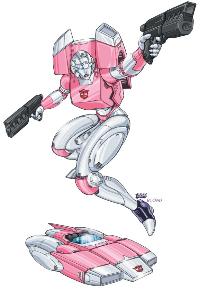
Arcee is a fictional robot character in the Transformers franchise. She has been depicted as a female Autobot, usually pink or blue in color. She has made more appearances and has had several more incarnations than any other female Transformer. Arcee's design, alternate mode, and personality vary depending on continuity.
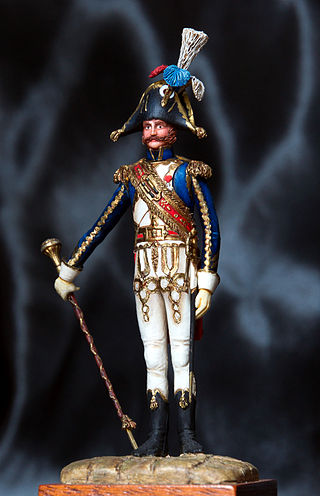
A model figure is a scale model representing a human, monster or other creature. Human figures may be either a generic figure of a type, a historical personage, or a fictional character.
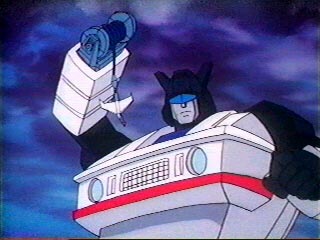
Jazz is a fictional robot character from the Transformers franchise. He is usually portrayed as a music-loving robot who speaks Black Vernacular English. In certain continuities he is shown as Optimus Prime's good friend and right-hand man.
Jetfire is the name of several fictional characters from the Transformers franchise. He is almost always depicted as an Autobot with flight capabilities and a jet or space shuttle as an alternate mode. In some continuities, he is a former Decepticon.
BotCon, briefly known as "The Official Transformers Collectors' Convention", is an annual convention for Transformers fans and collectors. BotCon has been held annually since 1994. BotCon is a syllabic abbreviation for "Robot Convention" but also refers to "Autobot" and "Decepticon", the protagonist and antagonist robot factions in the many continuities in the Transformers franchise.
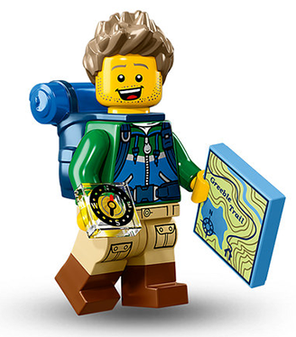
A Lego minifigure, often simply referred to as a Lego figure or a minifig, is a small plastic articulated figurine made of special Lego bricks produced by Danish building toy manufacturer The Lego Group. They were first produced in 1978 and have been a success, with over 4 billion produced worldwide as of 2020. Minifigures are usually found within Lego sets, although they are also sold separately as collectables in blind bags, or can be custom-built in Lego stores and on lego.com. While some are named as specific characters, either licensed from already existing franchises or of Lego's own creation, many are unnamed and are designed simply to fit within a certain theme. They are highly customizable, and parts from different figures can be mixed and matched, resulting in many combinations.
A redeco is a re-released version of an existing toy with a color scheme that is significantly different from the original release. Redecos normally include changes to the toy's paint application scheme, as opposed to a more straightforward repaint, which only alters the colors, not the ways in which they are applied to the toy. Redecos are an extremely popular way to create exclusive toys, allowing the new toy to look drastically different from the original, sometimes representing a different character, entity or item, without having to pay for an entirely new mold.

Sideswipe is a fictional robot character in the Transformers series.
Cliffjumper is the name of several fictional characters from the Transformers franchise. His name is usually associated with an Autobot whose toys are often red repaints or remold of Bumblebee toys.

The Super Powers Collection was a line of action figures based on DC Comics superheroes and supervillains that was created by Kenner Products in the 1980s.

Batman action figures have been produced since the 1940s. These action figures, inspired by the character's appearance in comics and serials, were created by DC Comics and manufactured by various toy companies. These figures were made of various materials such as wood, tin, and plastic. They were typically between 6 and 8 inches in height and featured movable joints that allowed them to be posed in various positions.
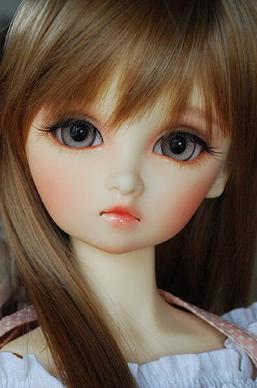
A ball-jointed doll is any doll that is articulated with ball and socket joints. In contemporary usage when referring to modern dolls, and particularly when using the acronyms BJD or ABJD, it usually refers to modern Asian ball-jointed dolls. These are cast in polyurethane synthetic resin, a hard, dense plastic, and the parts strung together with a thick elastic. They are predominantly produced in Japan, South Korea and China. The BJD style has been described as both realistic and influenced by anime. They commonly range in size from about 60 centimetres (24 in) for the larger dolls, 40 cm (15.5 in) for the mini dolls, and down to 10 cm (4 in) for the very smallest BJDs. BJDs are primarily intended for adult collectors and customizers. They are made to be easy to customize, by painting, changing the eyes and wig, and so forth.
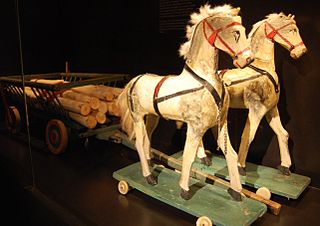
Model horses are scale replicas of real horses. They originated simultaneously – but independently – in the United States, Canada, and the United Kingdom, followed later by Sweden (UK-influenced), Germany (US-influenced), and Australia. They encompass a wide variety of fanbase activities, from those who simply like to collect, to those who show their models at model horse shows. Unlike model cars or trains, model horse collectibles do not need to be assembled from kits, although they can be altered to the collector's liking.

A reborn doll is a hand made art doll created from a blank kit or a manufactured doll that has been transformed by an artist to resemble a human infant with as much realism as possible. The process of creating a reborn doll is referred to as reborning and the doll artists are referred to as reborners. Reborn dolls are also known as lifelike dolls or reborn baby dolls.

A bisque doll or porcelain doll is a doll made partially or wholly out of bisque or biscuit porcelain. Bisque dolls are characterized by their realistic, skin-like matte finish. They had their peak of popularity between 1860 and 1900 with French and German dolls. Bisque dolls are collectible, and antique dolls can be worth thousands of dollars. Antique German and French bisque dolls from the 19th century were often made as children's playthings, but contemporary bisque dolls are predominantly made directly for the collectors market.

Star Wars Transformers is a Hasbro toy line started in 2006. The line features robot versions of various characters from the Star Wars franchise that transform into vehicles from the same series.
G.I. Joe is an American media franchise and a line of action figures owned and produced by the toy company Hasbro. The initial product offering represented four of the branches of the U.S. armed forces with the Action Soldier, Action Sailor, Action Pilot, Action Marine and later on, the Action Nurse. The name is derived from the usage of "G.I. Joe" for the generic U.S. soldier, itself derived from the more general term "G.I.". The development of G.I. Joe led to the coining of the term "action figure". G.I. Joe's appeal to children has made it an American icon among toys.
References
- ↑ "Artist "Wipes Off" Makeup From Mass-Produced Dolls to Reveal Super Realistic Faces". My Modern Met. 2018-06-06. Retrieved 2020-07-22.
- ↑ "Artist Removes Makeup from Mass-Produced Dolls to Transform Them into Realistic Faces". My Modern Met. 2019-02-21. Retrieved 2020-07-22.
- ↑ "This YouTuber Turns Barbie And Bratz Dolls Into Stunning, Realistic Disney Characters". Revelist.com. Retrieved 2020-07-22.